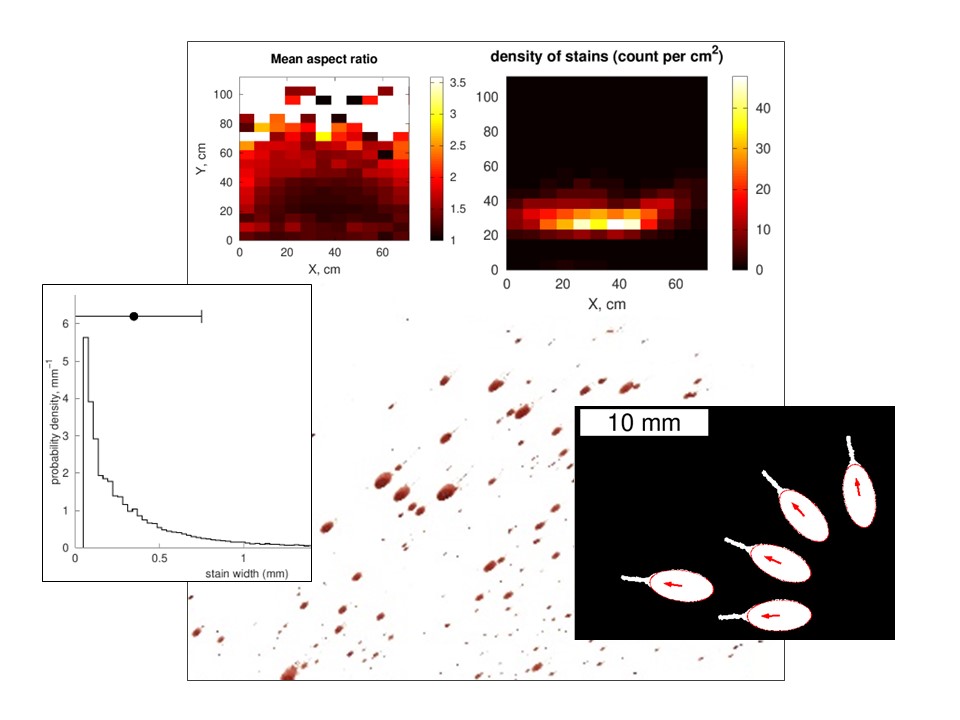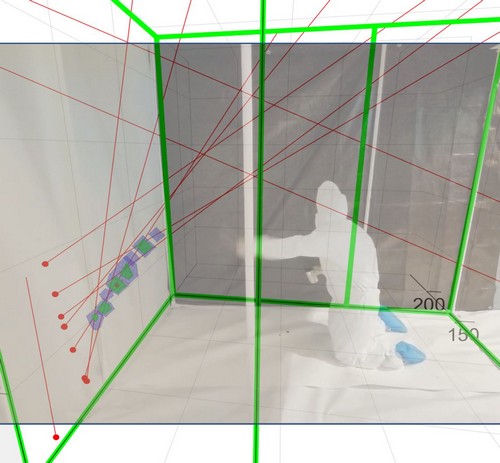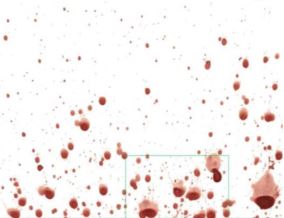Several datasets and pieces of software have been produced during the academic career of Dr. Attinger and/or R&D efforts of Dr. Atttinger’s consulting company, Struo LLC. Dr. Attinger is convinced that open data and quantitative tools are important to improve science and techniques. Below are snapshots of our various efforts in providing the BPA community with tools and data.

QuantifySpatter: QuantifySpatter is an open-source tool that identifies spatter stains on a digital picture. It measures and counts these automatically, even for spatter patterns involving thousands of stains. It then outputs statistics on their shapes, numbers, and positions. The development of the tool was started by academic researchers I advised during studies sponsored by US Federal agencies. For several recent peer-reviewed studies, the tool has been helpful to:
– assist with determining the area of origin of spatter patterns;
– assist artificial intelligence algorithms in determining the cause of a blood pattern;
– test the repeatability of bloodstain pattern experiments;
– and resolve a decade-old controversy on the physical basis of BPA. The open-source tool has been presented at the 2023 IAI conference. The tool is described in this video which also provides the download link from GitHub.

Automated Reconstruction of Weapon Motion from Cast-off Blood Spatter Patterns: Cast-off spatter patterns exhibit curvilinear trails of elliptical stains. These characteristic patterns occur when centrifugal forces detach drops from a swinging object covered with blood or other liquids. This peer-reviewed manuscript and associated open-source software describe a method to reconstruct the motion, or swing, of the object. The method is based on stain inspection, Euclidean geometry, and statistical likelihood. The reconstruction uncertainty corresponds to the volume of the reconstructed region, which is specific to the uncertainties of the case at hand. Work done with colleagues De Brabanter and McCleary at CSAFE with data and input from Eugene Liscio. The method and software are described in this video.
A data set of 61 impact blood spatter patterns [begin, end] scanned at high spatial resolution, with detailed methods, is described in this peer-reviewed manuscript. Controlled parameters were the geometry, speed, and shape of the impact object, as well as the distance between the impact and the vertical stained surface. Work done with colleagues at CSAFE. We also produced a dataset of 68 gunshot blood spatter patterns in this peer-reviewed article. The main parameters are the bullet and gun types, distance from the blood source, and influence of muzzle gases (or not). These datasets have been used to develop forensic reconstruction models in efforts led by Attinger or other academics.

